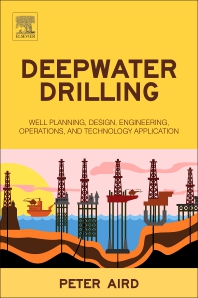Some drill bits are used to facilitate steering and to excavate the soil or rock at the face of the bore. Common types of drill bits used in the HDD industry are: 1) traditional slanted-face bits, 2) slanted-face rock bits and 3) hard rock or mud motor bits. Application guidelines are presented in the table on the next page.
Slanted-face Bits
Traditional slanted-face bits - also called spades, duckbills or modified spades - typically are used in soft- to medium-consistency clays and loose-to-dense sands. These bits may be of original “flat” construction or the currently more popular “bent” construction, giving a two-plane slanted-face for more aggressive steering. To drill a straight hole, the drill string is rotated and pushed simultaneously. When a steering correction is required with a traditional slanted-face bit, rotation is stopped and the drill head slanted face of the bit is preferentially oriented in the borehole. The drill rig then pushes the entire drill string forward. As the slanted face of the drill bit is pushed against the soil, the entire assembly is deflected in the desired direction. After the steering correction is completed, rotation is resumed until another correction is required.
If steering is unresponsive, in soft soils, it may be necessary to reduce fluid flow rate, while pushing without rotating. However, reducing flow rate may cause loss of circulation, which can lead to stuck drill pipe, hydrolock and other serious problems, so flow rates should be reduced with caution. If steering remains unresponsive, it may be necessary to trip out of the hole and change to a wider or longer bent bit. For shallow bores, a backhoe may be used to excavate down to the bit and use upward or downward pressure to redirect the bit. If not done carefully, this action can result in excessive stresses on the drill string and over-correction of steering. In stiff soils, it may be helpful to reduce advance rates while maintaining the flow rate to facilitate cutting of the intended path. However, steering usually is not a problem in hard soils.
Slanted-face Rock Bits
Slanted-face rock bits are applicable in harder ground conditions and soft rock (less than 3,500 psi unconfined compressive strength) that cannot readily be penetrated with thrust alone. The face of the tool usually has one or more nozzles emitting pressurized drilling fluid. In the harder ground conditions, steering is accomplished by techniques such as: partial rotation and release, wiggling the bit clockwise/counterclockwise (“fish-tailing”) while thrusting at the desired steering orientation, or by a broader arc of clockwise/counterclockwise rotation “oscillation” either side of the desired steering direction.Hard Rock/Mud Motor Bits
Hard rock bits are used in ground conditions ranging from hard soil to hard rock with compressive strengths up to 40,000 psi or higher. In rock or hard soils, the bit cannot be pushed without rotation. Instead, aggressive cutting bits and mud motors are used. Hard rock or mud motor bits are classified as tri-cone bits with milltooth and tungsten carbide inserts, drag bits and polycrystal diamond compact (PDC) drag bits.When drilling in rock, a positive displacement mud motor, powered by the flow output of a mud pump, generates torque and continuous rotation of the bit box at the downstream end of the motor without rotating the drill string. The bit is threaded and torqued into the bit box. Directional control with mud motors is attained by a small bend (or bent sub) in the motor or drill housing just behind the cutting head, which serves the same function as the slant on the face of a slanted-face bit.
Bit selection for mud motor applications is critical for success. A bit that is too large will adversely affect steering response. A bit that is too small will not create a sufficient annulus for removal of cuttings. The bit should be 0.75 inches to 1.25 inches larger than the diameter of the mud motor housing. The bit must also be matched to the hardness of the rock formation to be drilled. Gauge protection, provided on some tri-cone bits, reduces premature wear of the bit body. PDC drag bits typically are not used in the HDD industry due to high costs and high potential for damage from impact loading in boulders, cobbles and highly fractured rock. Sealed roller cone bearings are desired for longer bearing life.
ND




